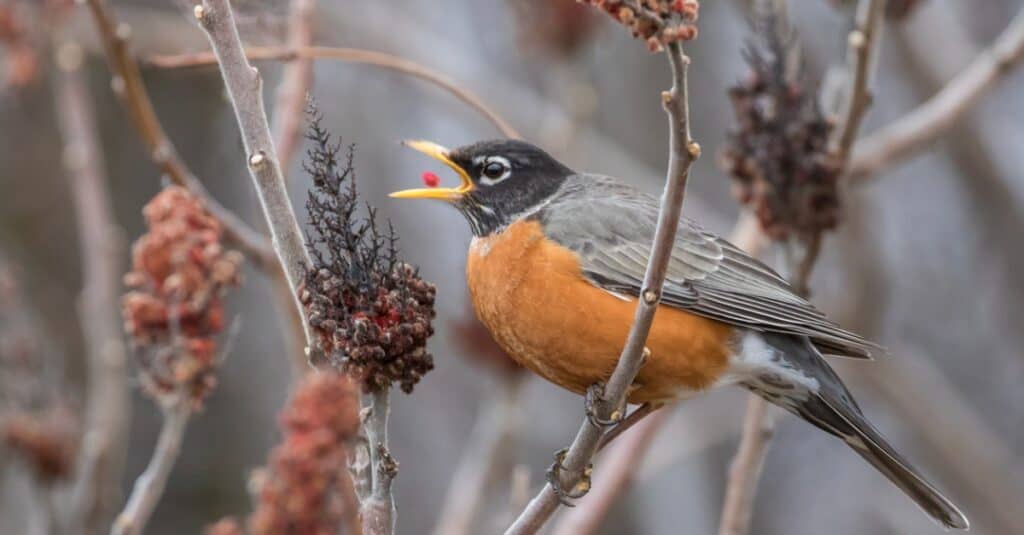A common name of an organism, also known as a vernacular name or English name, is the name that is typically used in everyday life. Additionally, scientists give organisms scientific names in Latin to identify the species.
Common Names versus Scientific Names
A scientific name is a two-word name that is unique to a particular organism. However, there may be more than one common name for the same organism.
Why Don’t Scientists Use Common Names for Organisms?

American robins are actually thrushes, a different bird from European robins, hence the need for scientific names, so as to not confuse animals in such cases.
©iStock.com/mirceax
Animals and plants may have several common names, but only one scientific name. Further, different species may share the same common name.
For example, “robin” in Europe is Erithacus rubecula. However, in the United States, a “robin” is a completely different species of bird. An American robin is a bird called a thrush, or Turdus migratorius.
By using scientific names, researchers can be certain not to misidentify a species.
Are Common Names Determined by Geography?

Regions can sometimes affect the use of common names. For instance, the fish people call flukes in the northern United States might be the summer flounder to people in the southern United States.
©iStock.com/Getty Images
They can be. Some common names are restricted to a regional location, while others are used universally within the same language. For example, Paralichthys dentatus is called a “summer flounder” to people living in the southern region of the United States. But in the northern part of the country, the same fish is called a fluke.
What About the Common Names of Plants?

, or purple coneflowers, are different from prairie coneflowers, though both are called a coneflower.
©Milosz Maslanka/Shutterstock.com
Animals aren’t the only species with multiple common names. Many plants of the same species are called by different names. Also, different plants may be called by the same name, such as coneflowers. Purple coneflowers (Echinacea purpurea) and prairie coneflowers (Ratibida columnifera) are both commonly called coneflower. However, they are two completely different types of plants.
What Are Some Issues with Using Common Names?
Although many people prefer to use common names rather than Latin scientific names for organisms, there are reasons researchers continue to use scientific names. Some of these are:
- Nobody regulates common names.
- They can change over time.
- The same plant or animal can have multiple common names.
- Conversely, the same common name can refer to multiple different species.
- Some species are so rare or unknown, they don’t have common names.




